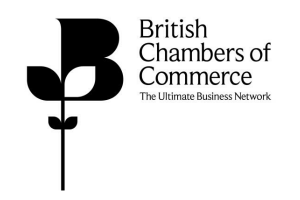This is an ever-changing situation and the content here should be read as correct at the date of publication (29.04.20).
Poppy Bramford, Policy & Public Affairs Manager, Herefordshire & Worcestershire Chamber of Commerce
Where are we now?
The exit strategy that the UK government formulates will govern the path dependency of the UK economy in ways hereto unimagined. Over the next 12 months, the trajectory of the economy has the potential to resemble one of three letters: V (a swift recovery), U (a dip, followed by flat growth, then recovery) or L (the rather ominous dip, flat growth and recovery in the distant future). The path dependency of the UK economy will be determined by the government’s current and future public health response to the coronavirus pandemic and the strategy taken to facilitate economic recovery. It is difficult to recall any period in recent history where public health policy and the economy were so closely linked. The shape and form of this recovery will require government to pay close attention to comparative an international examples of public health policy responses to lock down exit in countries whose economies hold some resemblance to our own.
The true impact of the coronavirus outbreak and the subsequent public health response will only become clear when official statistics are released, after a delay of several months whilst they are formulated. In the meantime, it’s clear that the coronavirus pandemic is having a significant impact on the economy. Some inferences and tentative suggestions can be made from the plethora of business indicators and economic trackers available.
Widespread business shutdowns at home and abroad in response to the coronavirus pandemic has unsurprisingly resulted in a rapid reduction in UK private sector output during April. The British Chambers of Commerce Coronavirus Business Impact Tracker suggests that cash flow remains a significant concern for many businesses, with 51% stating that they have less than three months’ cash in reserve. More worrying still, the latest data from this weekly report demonstrates the unpalatability of the CBILS bank loans, with risk adverse businesses reluctant to commit to the repayment terms, given the immense uncertainty which surrounds the UK economy’s exit from lockdown. 30% of businesses who stated that they did not intend to access a loan reported that they would not do so because they could not pay it back.
The operational challenges businesses currently face are rapidly developing into a wider economic malaise. The latest flash estimate from the Purchasing Managers’ Index (PMI) has revealed that the composite indicator fell to 12.9 for April 2020, falling from 36.0 during March 2020. The negative impact demonstrated by this economic indicator surpasses any other period during the PMI’s 22-year history. Forecasts for GDP growth, while clearly and understandably subject to major uncertainty, point toward a large decline in 2020. HM Treasury surveyed 25 investment banks, economic research organisations and other institutions for their GDP forecasts in the first half of April. The average forecast was for GDP to decline by 6% in 2020 (the range of forecasts was from -4% to -10%). To provide some context, GDP fell by -0.3% in 2008 and -4.2% in 2009 during the recession caused by the financial crisis (the largest post-war recession). The International Monetary Fund (IMF) Managing Director has also highlighted the severe economic cost of the Coronavirus outbreak, stating that the outlook for global growth for 2020 will be negative with “a recession at least as bad as during the global financial crisis or worse”. The challenge with this crisis is that it represents a shock to both supply and demand, with months of consumer spending lost due to social distancing measures and the temporary lock down.
What does recovery look like?
Despite the barrage of gloomy forecasts, there are some positives to be found. The Coronavirus Job Retention Scheme (JRS) has proved to be a critical lifeline for businesses and seems to have kept the labour market stable for now. Local data produced from over a sample of over 500 businesses in Herefordshire and Worcestershire suggests that 42% have utilised the furlough scheme already. At a national level, data from the British Chambers of Commerce suggests that 71% of businesses have furloughed some staff. 30% of these had furloughed at least three-quarters of their workforce. The JRS appears to be successively limiting rapid increases in unemployment. However, with Universal Credit applications rising at rates 5 times higher than average, the indicators suggest the buoyant labour market is in for a difficult year. The recent surge in claims for the Universal Credit benefit (1.4 million in the four weeks from 16 March) certainly suggest that the labour market will shift in the next 12 months, after enjoying a sustained period of low unemployment for some years.
Additionally, while the impact of the coronavirus may feel indiscriminate, some sectors will benefit from unexpected. resilience as a result of the new opportunities which have arisen as a result of this crisis. Businesses operating in the Cyber sector will no doubt benefit from the dramatic shift to virtual platforms. Tech companies that facilitate digital working will no doubt find themselves in a position of increased demand. Manufacturers who can shift or diversify their products to produce medical equipment will shield themselves from the brunt of force of reduced demand for sales and orders. Businesses who form part of the food and drink supply chain will benefit from demand hereto un-imagined as the dining out industry is no longer accessible under social distancing policies.
The scale of the economic policies and interventions the government has churned out during this period are a testament to the extreme and unprecedented circumstances businesses now operate in. There is no doubt that the government has committed a significant amount of spend to protecting the business community. The Chamber continues to play a key role in the refining process associated with influencing the intricacies of these policies to ensure they are fit for businesses. The deficit is likely to spiral to heights never seen before – beyond the levels of borrowing during the financial crisis and higher than at any time since the end of the Second World War. Despite signing something of a ‘blank cheque’ to protect jobs and reduce redundancies, the government itself has been clear that these measures will not prevent a wider slow-down in the economy. Nor are they necessarily designed to do so. The measures are there to ensure any damage to the economy is temporary as opposed to permanent. The extent to which they are able to ensure that this is a short, sharp shock to the UK economy will depend on their ability to implement a rigorous schedule of testing which is accompanied by sophisticated contact tracing.
Failure to manage recovery appropriately will widen the dip of this decline and will stretch out the period of stagnation, with dire consequences for the economy in the long term.
For more information or insights like this, please subscribe to our Policy newsletter here.




